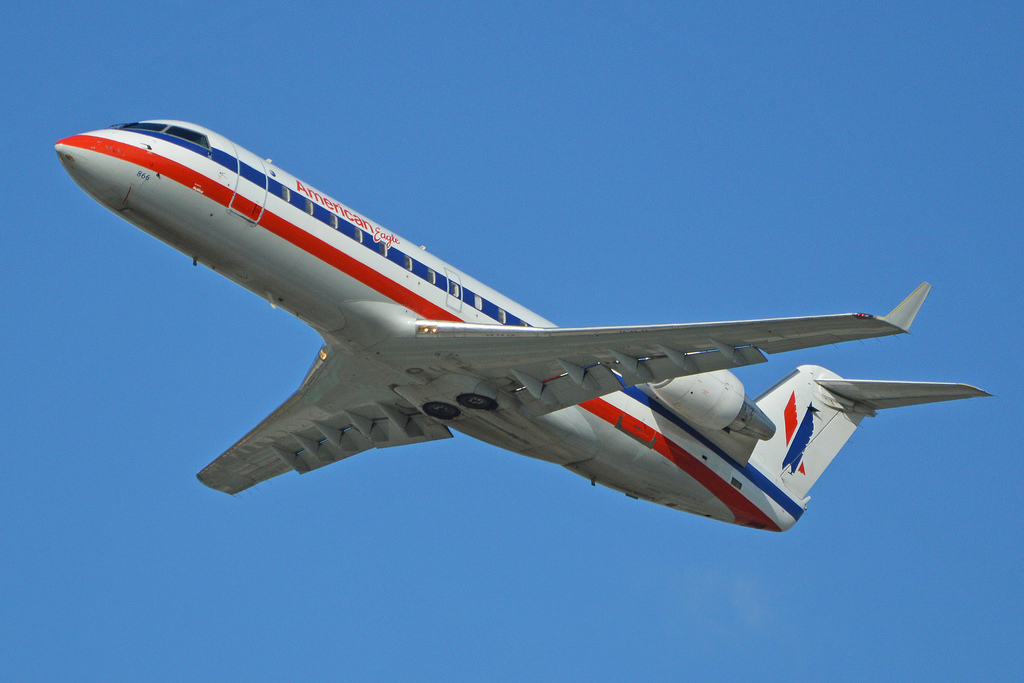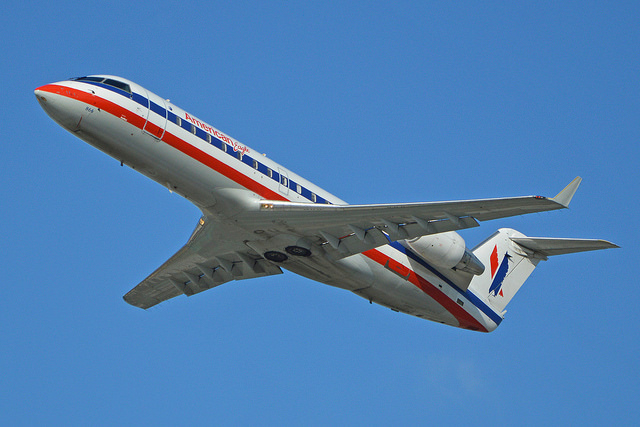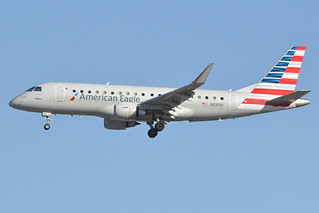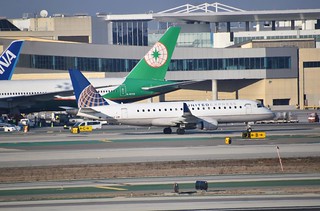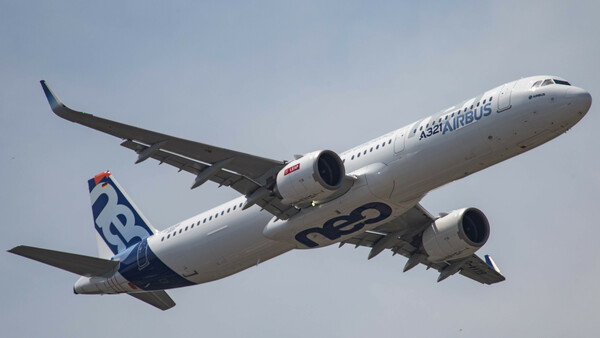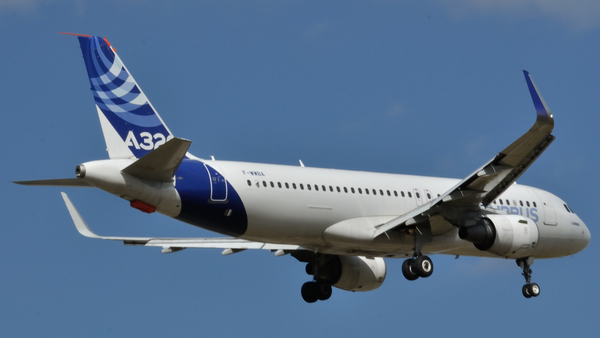Skywest CRJ2 at Milwaukee on Jun 6th 2011, right main gear up landing
Last Update: November 6, 2015 / 22:13:58 GMT/Zulu time
Incident Facts
Date of incident
Jun 6, 2011
Classification
Accident
Airline
Skywest Airlines
Flight number
OO-4443
Destination
Milwaukee, United States
Aircraft Registration
N866AS
Aircraft Type
Canadair Corporate Jetliner
ICAO Type Designator
CRJ2
The FAA reported the right hand main gear did not extend, the aircraft landed with the right main gear up. The passengers disembarked onto the runway, no injuries occurred.
The airport was closed for about 2 hours as a result.
The NTSB reported the right main landing gear door was up and the wheel was in its well. The aircraft sustained minor damage to the right wing tip, right flap assemblies and right flap pylon assemblies.
On May 1st 2015 the NTSB released their factual report stating that when the crew selected the gear lever down the first time, they received green indications for nose gear and left main gear but unsafe indication for the right hand gear as well as a gear disagree message. The crew went around, selected the gear lever up and received normal gear up indications. When the gear lever was selected down again, both main gear indicated unsafe and the hydraulic system #3 high temperature indication. The #3 hydraulic system was turned off according to QRH and a manual extension of the landing gear was attempted, the first officer reported that he had pulled the T-Cable to its mechanical stop holding it there for 5-10 seconds but the cable slipped back a few inches upon releasing the cable, both main gear indicated unsafe. Ground observers during a subsequently fly by reported the left main and nose gear were in position, the right main gear was not down.
The captain joined in in pulling the T-cable, this time it was noticed that the cable enagaged in its mechanical stop and remained there, the nose and left main gear indicated safe and the right hand main indicated unsafe.
The NTSB stated: "The airplane sustained minor damage to its right wing tip, right flap assemblies, and right flap pylon assemblies. The right main landing gear door was up, and the right main gear was in its wheel well."
First responders found the nose and left main gear in their fully down and locked position, the right main gear was in its full up position, the right main gear doors were flush with the fuselage. The T-Cable, length 10 inches, was found extended by 7 inches. The aircraft was lifted up. A maintenance engineer pulled the cable again resulting in the cable moving the additional 3 inches and the release of the right main landing gear, which slowly began to extend into its down position. When the maintenance engineer released the cable, it moved back a few inches and the right main gear stopped movement. Another pull on the cable brought the right main gear into its down and locked position.
The NTSB wrote: "The pressure and return hydraulic filters were examined with computed tomography scans and digital radiography. A NTSB aerospace engineer produced a computed tomography specialist's factual report based on the radiographic examination. The examination showed that there were three particles found in the pressure filter and one particle found in the return filter. There were several cracks noted in the epoxy material in the end caps of the return filter, and there were some high-density areas noted in both filters within the filter material itself." All particles were identified non-metallic.
The NTSB stated that the hydraulic fluids were examined and contained particles in excess of the maximum sizes recommended. Samples of other hydraulic systems, including #2 system, contained particles that were even visible.
No fault was found with the right main gear's up lock assembly. The hydraulic valves showed no anomaly, however one valve contained non-metallic debris of a seal strand.
The NTSB wrote: "The functional testing examination of the landing gear manual release T-handle revealed that the locking mechanism contained within the T-handle assembly failed to maintain the T-handle in its fully extended position when a specified retract load was applied to the assembly. When this load was applied, the T-handle fully retracted. Additional testing found that when a lesser load was applied to the T-handle, the T-handle began to slowly retract from its fully extended position. The T-handle stopped retracting and remained in a position outside of full retraction. Disassembly of the T-handle assembly did not find any mechanical discrepancies with the assembly, but did reveal that its inner housing and outer slider appeared to have an oily material coating of unknown origin. An examined sample revealed it was a lubricant. The design of the T-handle assembly does not call for the application of lubricants. The systems group's factual report is appended to the docket material associated with this case."
The NTSB reported as a consequence of this and other occurrences: "Bombardier revised the contamination limits in reference to hydraulic fluid in the aircraft maintenance manual."
On Nov 6th 2015 the NTSB released their final report concluding the probable cause of the accident was:
The failure of the right main landing gear (MLG) to extend normally, which resulted from the combination of a slightly worn uplock pin, the operation of the hydraulic pumps below their specified operating pressures, and contamination within the landing gear hydraulic system. Also causal to the accident was the failure of the right MLG to extend manually using the alternate gear selector handle due to the improper use of lubricant within the alternate release handle assembly, which prevented the handle from remaining in its fully extended position.
Incident Facts
Date of incident
Jun 6, 2011
Classification
Accident
Airline
Skywest Airlines
Flight number
OO-4443
Destination
Milwaukee, United States
Aircraft Registration
N866AS
Aircraft Type
Canadair Corporate Jetliner
ICAO Type Designator
CRJ2
This article is published under license from Avherald.com. © of text by Avherald.com.
Article source
You can read 2 more free articles without a subscription.
Subscribe now and continue reading without any limits!
Read unlimited articles and receive our daily update briefing. Gain better insights into what is happening in commercial aviation safety.
Send tip
Support AeroInside by sending a small tip amount.
Related articles
Skywest CRJ2 at Chicago on May 1st 2017, cargo smoke, smoke in cockpit and cabin
A Skywest Canadair CRJ-200 on behalf of American Airlines, registration N866AS performing flight OO-2936/AA-2936 from Chicago O'Hare,IL to Cedar…
Skywest CRJ2 at Palm Springs on Sep 8th 2016, engine anti ice overheat indication
A Skywest Canadair CRJ-200 on American Airlines, registration N866AS performing flight OO-3046/AA-3064 from Palm Springs,CA to Phoenix,AZ (USA) with…
Skywest E175 at Omaha on Oct 20th 2025, knocking on cockpit's door
A Skywest Embraer ERJ-175 on behalf of American Airlines, registration N510SY performing flight AA-6469 from Omaha,NE to Los Angeles,CA (USA), was…
Skywest E175 near Austin on Aug 28th 2025, turbulence causes 2 injuries
A Skywest Embraer ERJ-175 on behalf of United, registration N110SY performing flight UA-5971 from Aspen,CO to Houston Intercontinental,TX (USA) with…
Skywest CRJ7 at Appleton on Apr 27th 2025, bird strike
A Skywest Canadair CRJ-700 on behalf of United, registration N718EV performing flight UA-4748 from Chicago O'Hare,IL to Appleton,WI (USA), departed…
Skywest CRJ7 at Dallas on Apr 11th 2025, cabin did not pressurize
A Skywest Airlines Canadair CRJ-700 on behalf of American Airlines, registration N741EV performing flight AA-6269 from Dallas Ft. Worth,TX to San…
Skywest CRJ2 at Johnstown on Mar 24th 2025, wing tip strike on landing
A Skywest Canadair CRJ-200 on behalf of United, registration N961SW performing flight UA-5046 from Washington Dulles,DC to Johnstown,PA (USA), landed…
Newest articles
Wizz UK A21N at Prague on Sep 11th 2025, tail strike on landing
A Wizz Air UK Airbus A321-200N, registration G-XLRA performing flight W9-5775 from London Gatwick,EN (UK) to Prague (Czech Republic), landed on…
PIA A320 at Lahore on Jan 17th 2025, landed on wrong runway
A PIA Pakistan International Airlines Airbus A320-200, registration AP-BON performing flight PK-150 from Dammam (Saudi Arabia) to Multan (Pakistan)…
Subscribe today
Are you researching aviation incidents? Get access to AeroInside Insights, unlimited read access and receive the daily newsletter.
Pick your plan and subscribePartner

ELITE Simulation Solutions is a leading global provider of Flight Simulation Training Devices, IFR training software as well as flight controls and related services. Find out more.
SafetyScan Pro provides streamlined access to thousands of aviation accident reports. Tailored for your safety management efforts. Book your demo today
AeroInside Blog
Popular aircraft
Airbus A320Boeing 737-800
Boeing 737-800 MAX
Popular airlines
American AirlinesUnited
Delta
Air Canada
Lufthansa
British Airways
